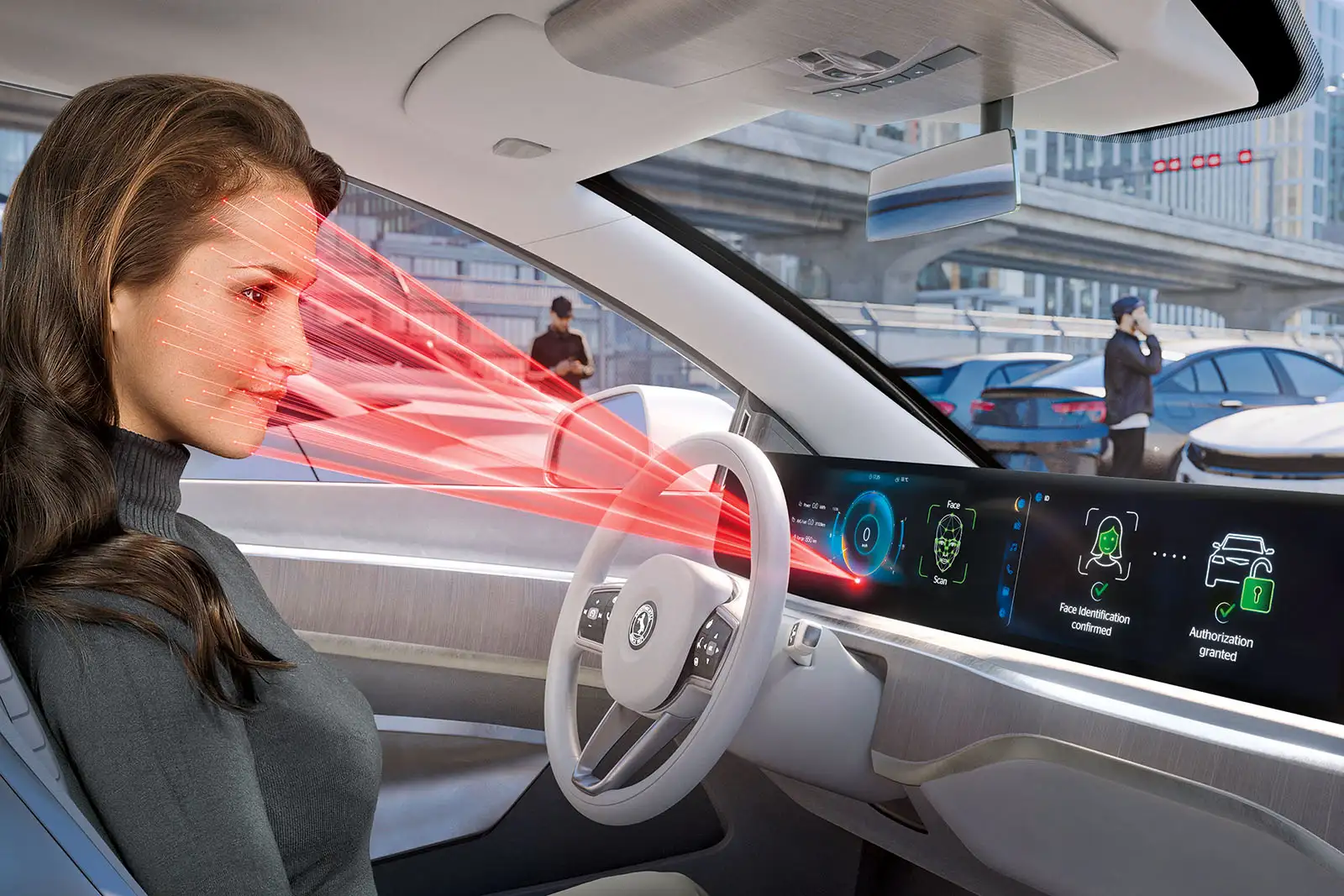Biometric Authentication in Cars

Biometric authentication is revolutionizing how we secure vehicles. Sensors and cameras capture biometric information like fingerprints or facial features which is then matched against stored profiles to verify identity and unlock vehicle systems.
Fingerprint scanners are currently the most prevalent biometric technology used in cars; however, facial recognition and retina or iris scanning technologies are gaining ground as well. These will eventually replace car keys while providing more advanced hand-free controls to increase driver convenience and safety.
Fingerprints
Biometric authentication uses physical characteristics such as fingerprints, face features, iris patterns or retina patterns to authenticate individuals and grant access. Although often found on smartphones, automakers and other manufacturers are now beginning to integrate biometrics into their vehicles to increase security while improving user experience.
Capacitive fingerprint sensing has become an increasingly popular consumer option and provides automotive designers with an effortless solution for creating a more convenient, personal and secure driving experience. Easy to implement and manage, capacitive fingerprint sensing also works great as part of an ADAS feature’s keyless entry feature – or to control other ADAS features that require high levels of security such as remote parking systems.
Facial recognition technology is another innovative advancement. Already employed by some luxury car brands – including Genesis Motor Europe’s GV60 electric SUV – facial recognition can detect signs of fatigue or distraction, helping prevent accidents as well as alert drivers if their performance becomes unsafe due to too little sleep or tiredness. Furthermore, emergency services may even be alerted should their vehicle be stolen.
Face
Biometrics market continues to flourish as biometrics provide safer, more convenient, and personal driving experiences, with superior anti-theft measures than traditional technologies like keys and passwords.
Biometric authentication measures may include fingerprint scans, face recognition software, retina or iris scans and voice verification technologies. Biometrics can often be combined with secondary authentication factors like passwords or key cards for added protection and user-friendliness.
Biometric technology is designed to fit seamlessly with existing security systems, making its implementation straightforward for companies. This ensures minimal disruption for users while cutting the costs associated with implementation of this form of security technology. Furthermore, biometric data cannot be stolen or replaced like passwords would.
Retina
As car technology converges with smartphones, consumers have come to expect certain features from their vehicles. Biometrics can meet those expectations by making vehicle access more secure and convenient.
Fingerprint scanners are one of the most prevalent forms of biometric identification used in cars, scanning drivers’ fingerprints to compare against an encrypted database of stored prints, granting access if a match exists. Facial recognition technology has also proven highly successful at unlocking and starting cars; using cameras to scan faces for unique features like eyes, noses and mouths it provides near 100% false acceptance rate accuracy in its biometric identification capabilities.
Other forms of biometric authentication include iris and retina scans. Iris and retina scans utilize cameras to take photos of the inside of each person’s eye to recognize them by their unique patterns; these technologies are relatively new but quickly growing popular, offering better ways of preventing car theft than traditional methods like hotwiring, with high levels of accuracy that’s susceptible to harsh environmental conditions and changes over time, so backup solutions such as key fobs may also be necessary.
Voice
Biometric security technologies have long been featured as part of science fiction films such as Total Recall and Minority Report, yet are increasingly used for real security applications. From retinal scans in Total Recall to facial recognition technology in Minority Report, biometric security has long been part of film narrative. But these technologies are becoming more prevalent.
Voice recognition technology, for instance, analyzes drivers’ unique voice patterns to detect and authenticate them – providing password-free security while preventing unapproved use of vehicles.
The automotive biometric market is experiencing rapid expansion due to the increasing need for strengthening security measures and shifting mobility paradigms. Unfortunately, consumer spending may suffer in an economic recession and concerns around biometric data storage may put off some buyers from purchasing such systems. To reach market potential effectively, partnering with a reliable supplier can provide secure technology platforms which match industry megatrends.

